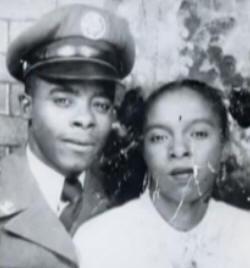|
The aircraft was powered by four large Pratt &
Whitney R-4360 piston engines producing 3,800 hp
each. The C-124's design featured two large
clamshell doors and a hydraulically-actuated
ramp in the nose as well as a cargo elevator
under the aft fuselage. The C-124 was capable of
carrying 68,500 lb cargo, and the 77 ft cargo
bay featured two overhead hoists, each capable
of lifting 8,000 lb.
Tonja Anderson, 41, a grandchild of airmen Isaac
Anderson who was one of the passengers onboard
that deathly flight has tried in vein over the
years to get the military to go out to the crash
site to recover the remains of all those who
died. She explained that the military informed
the family that recovery of the remains would be
unfeasible and too expensive.
Anderson said, "If they can bring me one
bone of my grandfather or his dog tag that
would be closure for me". It could take
months before anthropologist will be able
identify the remains.
First deliveries of the 448 production
aircraft began in May 1950 and continued
until 1955. The C-124 was operational during
the Korean War, and was also used to assist
supply operations for Operation Deep Freeze
in Antarctica. They performed heavy lift
cargo operations for the US military
worldwide, including flights to Southeast
Asia, Africa and elsewhere. From 1959 to
1961 they transported Thor missiles across
the Atlantic to England. The C-124 was also
used extensively during the Vietnam War
transporting materiel from the U.S. to
Vietnam. Until the C-5A became operational,
the C-124, and its sister C-133 were the
only aircraft available that could transport
very large loads.
|
|
 |

